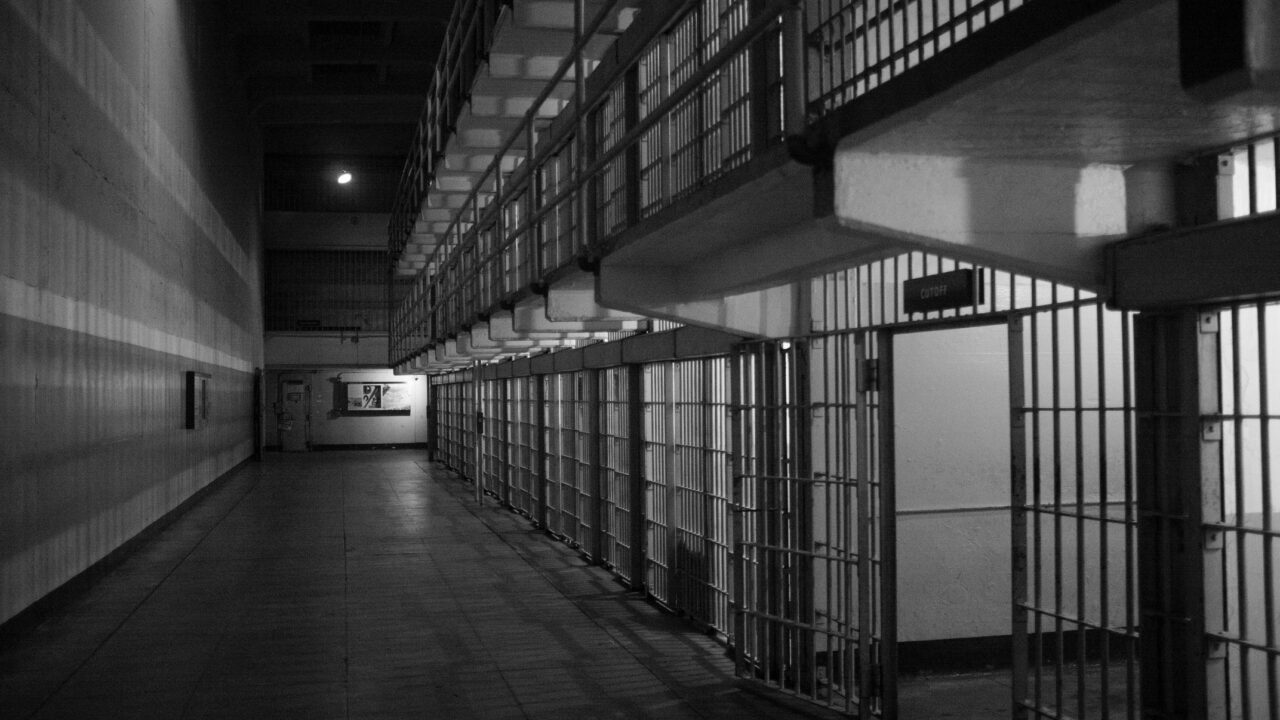In more optimistic moments, I see the COVID-19 pandemic as offering us an opportunity to reimagine what it means to be a just society and move in the direction of targeting the root causes of mass incarceration. People of all backgrounds are pressuring policymakers to respect Black lives. The government is providing more support to those who are unemployed. Cities are delivering free meals and groceries to people who cannot leave their homes.
In some ways, the pandemic has demonstrated that our institutions can better serve all members of our communities, at least when forced. For example, if we turn to the criminal justice system, we can see some pivots from the status quo that are more humane toward people and communities disproportionately harmed by mass incarceration:
-
Police officers who use excessive force against those suspected of breaking the law are being held accountable.
-
Jurisdictions are releasing people from prisons and jails, most commonly those detained pretrial or those accused or convicted of violating technical conditions of parole or probation, such as failing to report to law enforcement or remain in an approved residence.
-
Since visits have been suspended for many correctional facilities, many jurisdictions are offering free phone calls, video calls, or other forms of communication so that incarcerated people can keep in touch with their lifelines on the outside without breaking the bank.
In this pivotal moment, advocates have an opportunity to push back against the ways that policymakers, oftentimes in concert with large companies, use the criminal justice system to oppress poor people of color and to demand permanent change.
The U.S. as the #1 Incarcerator
Racial capitalism has facilitated the U.S.’s ascent to global leader in incarceration, and it has prevented policymakers from prioritizing the humanity and well-being of incarcerated people and their loved ones over profits. Incarcerated people and their loved ones are disproportionately poor, yet there are still countless examples of policymakers, often alongside private actors, attempting to get blood from a stone. For example, 74 percent of people in local jails have not been convicted of any crimes and are legally presumed innocent. They sit in jail because they cannot afford cash bail. This practice has spurred the growth of the bail bonds industry, which has blocked reforms that would diminish the prevalence of cash bail and pretrial detention.
Private companies also profit off of mass incarceration by winning contracts to provide food and health services, commissary, and phone or video calls to public prisons. Despite the downward trend in the price of phone calls in the free world, companies and government actors’ desire for profits has prevented the price of phone calls from prisons and jails from similarly dropping. Companies commonly offer governments a commission — a percentage of their revenue — which incentivizes officials to sign phone contracts with high rates rather than prioritize affordability and family bonds. As a result, more than a third of families go into debt paying to keep in touch with their loved ones behind bars. In a growing number of local jails, sheriffs and private companies have colluded to replace free, in-person visits with expensive video chats, robbing incarcerated people and their loved ones of in-person connection long before the pandemic made it a public health recommendation.
But mass incarceration as a money-making venture is not unique to private-public partnerships. The killing of Michael Brown spurred the Department of Justice to investigate Ferguson, concluding that the potential for revenue, not public safety, motivated law enforcement. In some states, most visibly Louisiana, local sheriffs fill unused jail space with federal and state prisoners — for a price. This side business leaves sheriffs with little incentive to implement reforms, such as limiting pretrial detention. In sum, at least $182 billion annually flows through the criminal justice system every year.
Those most impacted by mass incarceration are also those with less political power. Mass incarceration has disproportionately impacted poor people of color, which has no doubt made it easier for policymakers to ignore the ways that mass incarceration impacts our communities. For example, due to the practice of prison gerrymandering, poor communities of color lose out on political power to the benefit of the largely white districts that contain prisons. Formerly incarcerated people’s right to vote is only sometimes restored automatically and too often attacked.
COVID-19 Cannot Be Imprisoned
COVID-19 has highlighted the danger of a stubborn insistence on an “us versus them” mentality toward incarcerated people and their loved ones. Correctional facilities are particularly vulnerable to the spread of COVID-19, which poses a threat to the health of our larger communities. Prisons and jails are dense, making social distancing impossible. In some correctional facilities, beds are as close as three feet apart. Worse, unlike cruise ships or nursing homes, incarcerated people often lack necessary hygiene products, like hand sanitizer, to protect themselves from infection. Jails and prisons are also filled with people with chronic health conditions that make them especially vulnerable to infection. For example, 20.1 percent of people in jails and 14.9 percent of people in state and federal prisons have asthma as compared to only 10.2 percent of the U.S. population.
Unsurprisingly, these vulnerabilities have facilitated the rapid spread of COVID-19 among incarcerated populations. The worst COVID-19 outbreaks have been in correctional facilities. On Rikers Island in New York City, the COVID-19 infection rate is five times higher than that of New York City and seven times that of New York State. Rikers can be accurately described as the epicenter of the COVID-19 pandemic.
Yet, while the high infection rate in correctional facilities like Rikers poses a danger to everyone, it gets short shrift in policymakers’ COVID-19 updates. This failure is attributable, in part, to policymakers overlooking and misunderstanding how the criminal justice system threatens society at large, including:
-
A majority of incarcerated people will go home at some point.
-
Jails are constantly churning. People are arrested and booked into jail 10.6 million times annually.
-
Corrections is an industry with employees who go home to families and communities, sometimes carrying infections or trauma.
-
Mass incarceration has long ravaged Black and brown communities. At least one in four women and half of Black women nationwide have an incarcerated family member. These are people who spend a significant amount of time, money, and effort to visit, call, and otherwise support their incarcerated loved ones.
The criminal justice system interacts with our communities far more than it may seem at first glance. For both moral and public health reasons, our policymakers should focus on and respond to the spread of COVID-19 in prisons and jails.
To be sure, policymakers nationwide are releasing incarcerated people or slowing the number of admissions into correctional facilities in order to slow the spread of the virus. For example, San Francisco’s jail population has dropped by 38 percent since the pandemic began. The drops in correctional populations are encouraging and should be further encouraged.
COVID-19 Responses Illuminate Our Work Ahead
But a look at the actions taken — and not taken — reveals some of the most salient obstacles to lasting criminal justice reform. Policymakers are still not reducing incarcerated populations as dramatically or as quickly as they should. For example, while the typical local jail has reduced its population by more than 30 percent, typical state prisons have only reduced their populations by five percent. Social distancing is equally impossible in prisons and jails so there is no excuse for prisons’ inaction. Additionally, even in major cities that have recently had the momentum to achieve major criminal justice reforms, such as New York City, even the most modest reforms have occurred too slowly. New York City still has far too many people detained for technical parole violations.
Decisions on whom to release inappropriately focus on “nonviolent” or “low-level” offenses. Even during a global pandemic, jurisdictions are choosing to pass over people accused or convicted of violence despite research showing that this population is among the least likely to return to prison and despite the fact that the Eighth Amendment to the U.S. Constitution supposedly protects all prisoners from serious threats to their health and safety. At the same time, even during a public health and economic crisis, police are enforcing petty crimes, such as counterfeit bills, further increasing the prison population and too often leading to fatal encounters like the killing of George Floyd.
Our Charge for the Days Ahead: Build Political Courage
Fortunately, there are many organizers, family members, public defenders, and others who are working tirelessly to make it more likely that our criminal justice system is more just coming out of the pandemic. In that work, it is important that:
-
We frame releases as just the beginning — and protect them. We should acknowledge that the people currently being released from our prisons and jails consist almost exclusively of the low-hanging fruit. Ending mass incarceration will require a serious look at the 40 percent of incarcerated people convicted of so-called violence. We should also protect releases by discouraging any unnecessary shifts toward oppressive community supervision and pushing for greater funding of the social services that people need upon release. In this moment of increased criticism of police brutality, we should consider that the people most often released — those accused or convicted of low-level offenses — don’t need to be locked up in the first place. We should use the momentum gained in response to recent police killings to decriminalize more behavior, thereby reducing the likelihood of violent police-civilian encounters.
-
We should advocate for turning positive, temporary changes into long-term policies. We should refuse to return to a world in which incarcerated people and their loved ones are forced to choose between keeping in touch and affording necessities by pressuring correctional facilities to commit to free phone calls.We should call for divestments not only from police budgets but also from correctional budgets. At the same time, we must do the follow-up work of calling for investments in social services. For example, we should redirect money from police to social workers, educators, and other community advocates. Reducing our reliance on law enforcement in a systematic way will allow us to imagine a society that is less bound to punitive responses.
-
Finally, we must continue to humanize the people who come into contact with the criminal justice system. With millions of Americans unemployed and more uncertainty to come, it is possible that crime — which intersects with poverty — will increase. Police, who technically act on our behalf, must remember that anyone suspected of a crime is someone’s son, daughter, sibling, or parent.
If New York’s recent bail reform rollback or the grossly disproportionate focus on looting rather than state-sanctioned police violence are any indicator, the work of ending mass incarceration will require great political courage. I will add strengthening my own political courage to my quarantine projects. Will you?

